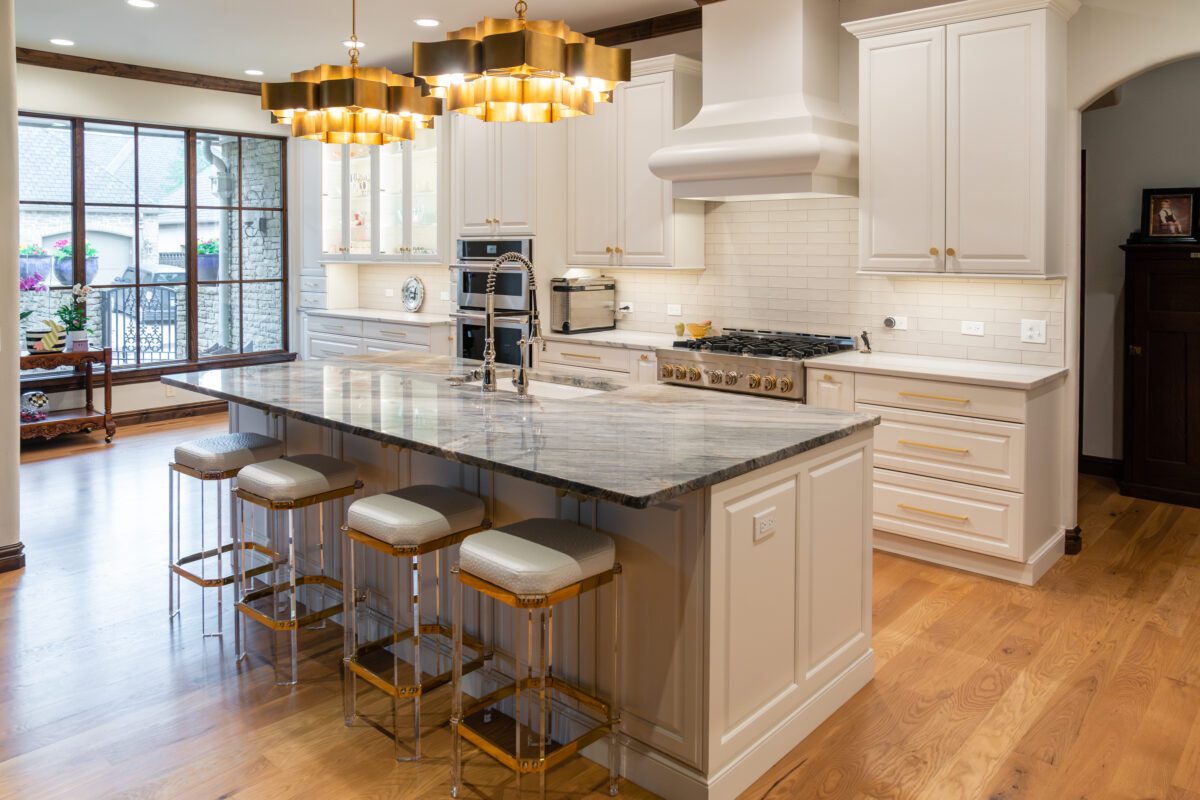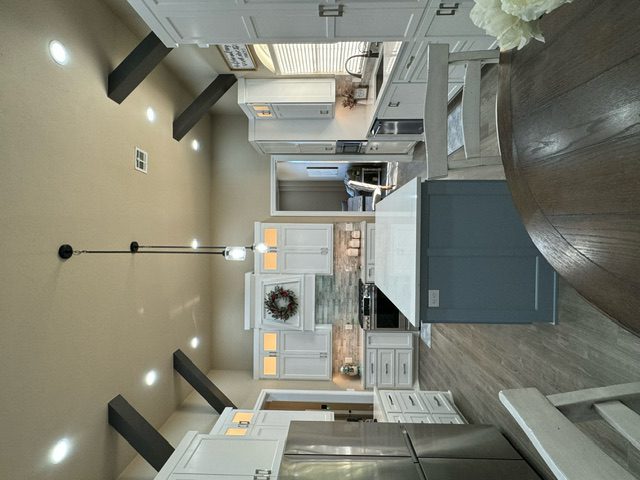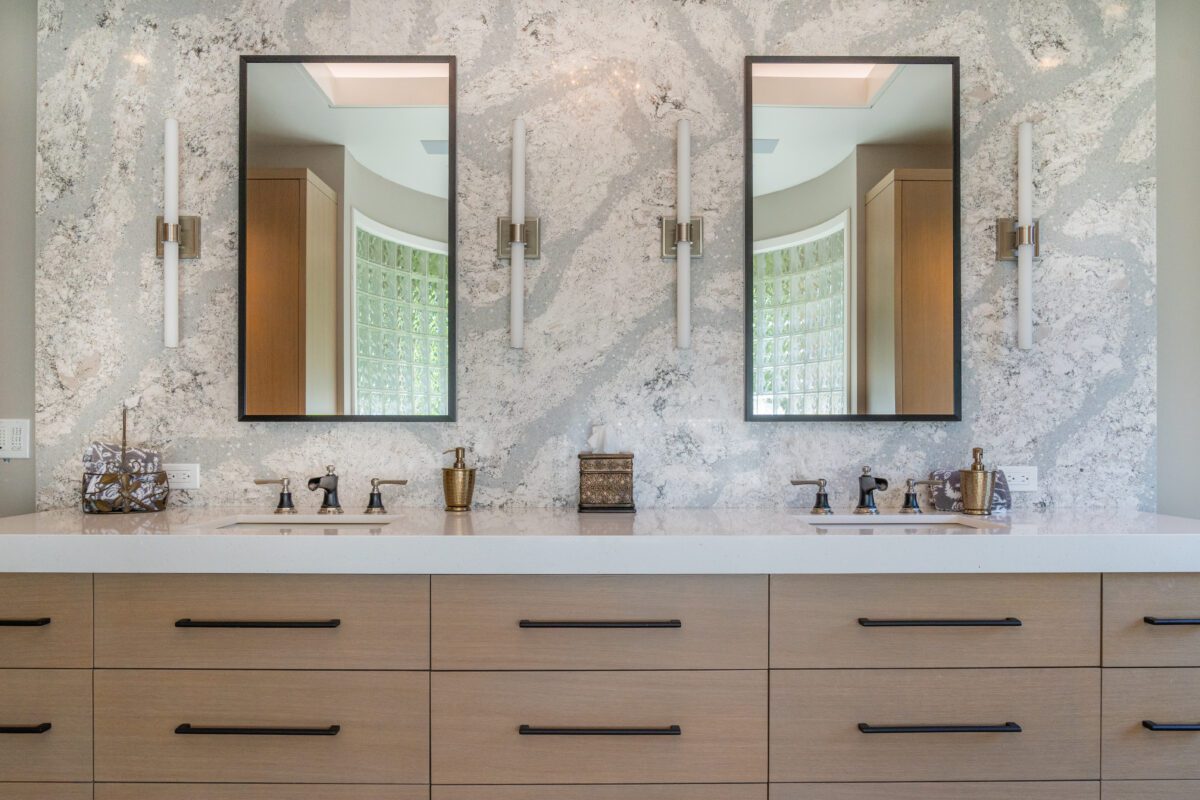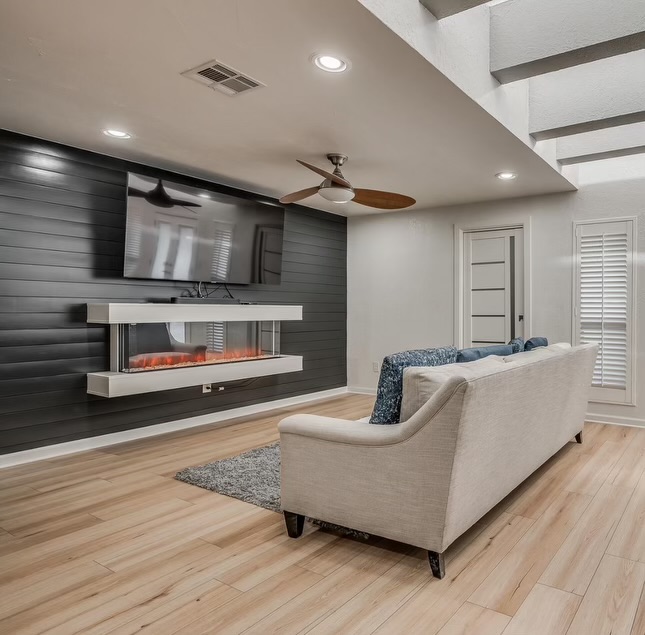How to Make a Smooth Transition
When it comes to remodeling, expect the unexpected, do your due diligence, budget wisely and prepare for the inevitable dust of it all. Most of all, the experts agree, have a plan.
“Every project, large or small, needs an owner-approved plan,” says Kent Hoffman, owner of Kent Hoffman Construction in Oklahoma City. “By spending money on the planning process, mistakes and unnecessary expenses can be avoided. Ideally, this plan is professionally drawn and attached to the builder’s contract with the owner. The scope of the work needs to be in writing so that all parties can be in sync with their expectations. This preconstruction process can expedite the building process and provide the contractor with the necessary information to develop a budget.”

Clarify your expectations, advises Paul Little, owner of OKC-based Paul Little Construction. To help establish the project scope, research online for photos and create a storyboard. Notice colors for paint, tile, walls, ceilings, woodwork and hardware and gain a general understanding on materials pricing.
“All these things will help so that when you call a contractor, you and the contractor are on the same page for an accurate estimate,” says Little. “There have been far too many times when I was out at a client’s home and thought I had what they wanted – only to have to add, delete or change the bid due to lack of understanding of the vision.”
Investment in the creative process leads to a worthwhile project for all involved.
“I think remodeling can be fun and successful,” says Jack Arnold, owner of Tulsa’s Jack Arnold Companies. “There are unknowns that must be flushed out, as they occur throughout the project. The homeowner needs to have a clear understanding of what they want to achieve. I suggest they visit with family and friends that have completed a remodel. I would also recommend finding a designer/architect/builder early, as they can help eliminate some of the unknowns.”
Things to Know


Renovation complexities are less daunting when homeowners are armed with some hard truths; it’s wise to enter the process knowing that it will probably take longer than you think, that it will look worse before it looks better, and just because something in your home appears fine at first glance, doesn’t mean it is.
“The plumbing works, the electrical works, the roof doesn’t leak, life is good. We think all it needs is a simple take-out and put back,” says Little. “Realistically, there is nothing simple about it; you have not seen that there has been a drip in the wall for years that has destroyed the wood, the insulation and drywall. There could have also been a previous remodel that you didn’t know about that may have been done with less than quality work.”
In short, budget for possible unpleasant surprises.
“We ask the homeowner to always allow at least 20% for unexpected expenses,” says Little. “The one thing that a homeowner must understand is that a contractor cannot estimate the unknown or items discovered. In almost every instance, these situations will come at the expense of the homeowner.”
Arnold agrees: “Even with my years of experience, where I think I have worked through almost every unknown, I still encounter unknowns when I do remodels,” says Arnold. “I think what is important to know is that you need to be flexible with your thought processes. Everything can be resolved, but sometimes you must change direction to get to the desired result.”

Even with an established plan and budget, hidden costs are often revealed as you chug along. Preparations such as ensuring your home is up to code can help mitigate additional costs. It’s also important to consider storage of furniture, pet boarding and even the costs of eating out if the kitchen is inaccessible. Utility bills may rise, and permits will likely be needed.
“If your home is older, you could be required to make upgrades to achieve code compliance,” says Hoffman. “If your home has been remodeled in the past there could be issues which the previous owner failed to address. Also, it’s very important to evaluate the condition of the utilities servicing your home. Before or during construction, have your plumber camera your sewer line and assess the gas service. Have your electrical contractor evaluate the service coming into your home and the condition of your breakers and breaker box.”
Arnold also notes that inflation is a major consideration.
“The continued rising prices have surprised me,” he says. “When the pandemic shut down numerous manufacturing plants, both domestically and internationally, the prices went up exponentially. Lumber prices were exceeding four times what we think they should have been. It took time for these plants to get back online. Additionally, the wait time for order processing seems to be back on track, so projects are not being held up waiting on building materials. It is better, but it is still expensive. I think it is leveling out, but I do not see prices dropping down to pre-pandemic costs.”

When Is Best to Start?
Timing is a factor when embarking on a renovation project, and things to consider include seasonal prices of materials, weather, contractor availability and even holidays with built-in days off.
“The best timing for a project depends on so many factors,” says Hoffman. “Some large projects require that the owners move out of the home. In this situation, the timing is dependent on the availability of new accommodations and the contractor’s schedule. In Oklahoma, our weather is very unpredictable. We prefer starting new additions during the dryer months. If the project is an interior remodel to the existing home, then the owner and contractor need to determine what timing is most convenient.”
Autumn is the ideal season for renovations, according to U.S. Window & Door. While the peak season is the milder weather months of May through June, fall is quieter, with bargains more abundant and the weather ideal. It can also mean project completion just in time for winter. Winter itself, for indoor projects, can also be a budget-friendly time frame with higher contractor availability.
Hiring The Experts
Choosing the right remodeler, contractor, designer and other professionals means making sure they are licensed and, ideally, locally based. Getting multiple estimates to ensure you are getting a competitive deal is also a good idea – along with getting some word-of-mouth recommendations.
“Good references are the most important ingredient when selecting your team for a project,” says Hoffman. “Well established and qualified contractors and designers will have a list of clients and projects for an owner to call and view. It is very important that your project team work well together and meet as needed to deliver an exceptional product. Make sure your contractor has the proper insurance in place before signing any contract. Asking for a bank and Better Business Bureau reference is never a bad idea.”
Arnold continues: “Your family and friends circle might be able to give you the names of contractors that have completed good jobs for them. They might also be able to help you steer clear of questionable contractors. It is important that you and the contractor agree on timing, pricing, and you are comfortable working with them as a team.”
Staying Safe
During a remodel, your home can become utter chaos. But there are ways to stay safe – whether you’re living on-site or just visiting to check out the progress.



“In most cases, I believe the homeowner should move out of the residence during the remodel,” says Arnold. “Construction is very disruptive to your daily routine. The site is dusty, noisy, and there is no privacy. It is not like camping – it is stressful for both the homeowner and the contractor. Sometimes the contractor will need to turn off the water or electricity while they work on the project. If the larger part of the remodel is outside the original building and the project could be 90% complete before they open it up to the main residence, then that might be a scenario where you could stay in the house.”
Hoffman continues: “Construction sites can be hazardous depending on the magnitude of the project. Older homes can have asbestos, lead paint or mold which require special procedures and precautions. Air quality is a major concern during remodeling. When possible, shut off your heating and air during the major dust producing times. Approved masks and eyewear should be used throughout the project. Always protect the areas of the home which are not being renovated. Should the owner and contractor agree that the owner can remain in the home during remodeling then the owner’s living area should be secure. During the painting and flooring stages the owner should be prepared to move out because of dangerous fumes. Once the project has been completed, a thorough cleaning of the HVAC system is mandatory.”






















